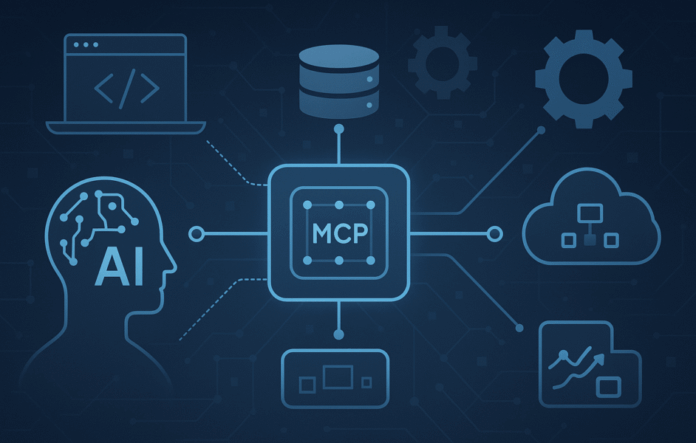Introduction to Model Context Protocol (MCP)
The rapid expansion of artificial intelligence (AI) across various industries has led to an increased need for integration between AI models, data sources, and tools. To address this need, the Model Context Protocol (MCP) has emerged as a crucial framework for standardizing AI connectivity. This protocol enables AI models, data systems, and tools to interact efficiently, facilitating smooth communication and improving AI-driven workflows.
The Need for Standardization in AI Connectivity
The integration of AI across sectors such as healthcare, finance, manufacturing, and retail has led organizations to incorporate an increasing number of AI models and data sources. However, each AI model is typically designed to operate within a specific context, making it challenging for them to communicate with each other, especially when they rely on different data formats, protocols, or tools. This fragmentation causes inefficiencies, errors, and delays in AI deployment. Without a standardized method of communication, businesses struggle to integrate different AI models or scale their AI initiatives effectively.
Understanding Model Context Protocol (MCP)
The Model Context Protocol (MCP) was introduced by Anthropic in November 2024. The main objective of MCP is to enable advanced AI models to generate more relevant and accurate responses by providing them with real-time, structured context from external systems. Before MCP, integrating AI models with various data sources required custom solutions for each connection, resulting in an inefficient and fragmented ecosystem. MCP solves this problem by offering a single, standardized protocol, streamlining the integration process. MCP is often compared to a “USB-C port for AI applications,” simplifying device connectivity and making AI more practical and responsive.
How Does MCP Work?
MCP follows a client-server architecture with three key components:
- MCP Host: The application or tool that requires data through MCP.
- MCP Client: Manages communication between the host and servers, routing requests from the host to the appropriate MCP servers.
- MCP Server: Connects to specific data sources or tools and provides the necessary context to the AI model via the MCP standard.
When an AI model needs external data, it sends a request via the MCP client to the corresponding MCP server. The server retrieves the requested information from the data source and returns it to the client, which then passes it to the AI model. This process ensures that the AI model always has access to the most relevant and up-to-date context.
Key Benefits of Using MCP
Adopting MCP provides several advantages for developers and organizations integrating AI into their workflows:
- Standardization: MCP provides a common protocol, eliminating the need for custom integrations with each data source.
- Scalability: Adding new data sources or tools is straightforward with MCP.
- Improved AI Performance: By providing access to real-time, relevant data, MCP enables AI models to generate more accurate and contextually aware responses.
- Security and Privacy: MCP ensures secure and controlled data access.
- Modularity: The protocol’s design allows flexibility, enabling developers to switch between different AI model providers or vendors without significant rework.
Use Cases and Examples
MCP is applicable across a variety of domains, with several real-world examples showcasing its potential:
- Development Environments: Tools like Zed, Replit, and Codeium are integrating MCP to allow AI assistants to access code repositories, documentation, and other development resources directly within the IDE.
- Business Applications: Companies can use MCP to connect AI assistants to internal databases, CRM systems, or other business tools.
- Content Management: MCP servers for platforms like Google Drive and Slack enable AI models to retrieve and analyze documents, messages, and other content.
Future Implications
The Model Context Protocol represents a significant step forward in standardizing AI connectivity. By offering a universal standard for integrating AI models with external data and tools, MCP is paving the way for more powerful, flexible, and efficient AI applications. Its open-source nature and growing community-driven ecosystem suggest that MCP is gaining traction in the AI industry.
Conclusion
In conclusion, the Model Context Protocol (MCP) provides a standardized, secure, and scalable solution for connecting AI models with the data they need to succeed. By simplifying integrations and improving AI performance, MCP is driving the next wave of innovation in AI-driven systems. As AI continues to evolve, the need for easy connectivity between models and data will only increase, making MCP a crucial component in the future of AI development. Organizations seeking to leverage AI should explore MCP and its growing ecosystem of tools and integrations to stay ahead in the rapidly evolving AI landscape.

